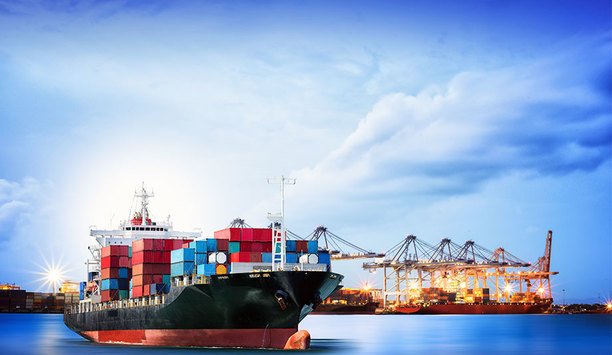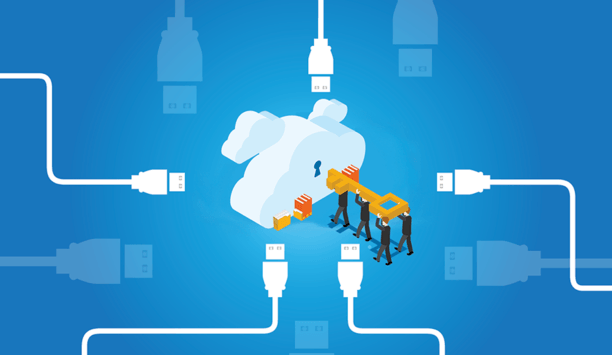Transportation security applications - Expert commentary
Over the course of the past few months, I have discussed a myriad of topics, from Big Data, the Internet of Things and emerging video surveillance-use cases, to analytics, storage complexities and IT technologies like virtualisation and hyperconverged infrastructure (HCI). All of these trends have a significant effect on the security market, and in April they were highlighted in spades at ISC West. It’s great to talk about these trends but it’s far better to see how they are being l...
Brexit will bring sweeping changes to the way the UK not only interacts internationally, but also internally. With the country standing alone with regards to trade and exports, it is vital for us to be fully prepared. However, there is one area that I think needs much greater scrutiny—the UK technical skills gap. Tellingly, there is a palpable shortage of technical training and skills right across the UK economy. With the country’s economic strength relying heavily on cutting-edge t...
Despite the huge amount of video data collected, statistics show that only 10 percent of data is ever used and most loses its value within seconds of being generated. Why use such a limited amount of data? Many security organisations are focused on delivering the right information in case of an emergency or providing the correct evidence after a criminal act. Yet the fact is, a new video security system can be a large investment. Together with the service, maintenance and management costs assoc...
When asked about what the market should be thinking about in 2018, I am left offering an answer that serves as an urgent call to action: prepare yourself for change! The security industry is soon likely to see a dramatic shift from the traditional segmentation of commercial and residential security. Smart phones, mobile technologies, cloud computing, and having everything provided ‘as a service’ in peoples’ lives means users of buildings have a new set of expectations. In many...
The year 2017 saw some of the worst natural disasters in North America, with Hurricanes Harvey and Irma wreaking havoc on Houston, Texas, and the Caribbean with force of which we haven’t seen before. While many people chose to evacuate these areas, many were left to deal with the devastation and first responders had the difficult job of assessing the damage, rescuing trapped victims and delivering food and supplies. AI-enabled drones and robotics to assess damage In addition, more than 1...
The term ‘marine’ comes from the Latin mare, meaning sea or ocean, and marine habitats can be divided into two categories: coastal and open ocean. Video surveillance (VS) applications can cover both types of marine environment with system for ships, maritime ports, onshore and offshore installations, etc. We should want to further analyse VS for ships and try to explain the types of ships on which it can be used, the ways in which VS can be used on ships, the typical certifications...
Video surveillance as a service (VSaaS) is not just for commercial organisations. Federal, state and local governments can also realise benefits from the technology—and use it to deliver an integrated video surveillance system that addresses some of their unique security needs. Video Surveillance as a Service (VSaaS) What is VSaaS? Simply stated, it’s a cloud-based video surveillance solution that is packaged and delivered as a service over the internet. The price varies depending...
Throughout the UK there are many examples of smart city transformation, with key industries including transport, energy, water and waste becoming increasingly ‘smart’. A smart city is a one that uses information and communication technologies to increase operational efficiency, share information with the public and improve both the quality of government services and resident welfare. Smart access is an important step forward in providing technologically advanced security manag...
While US market is being sensitive about cybersecurity through their popular camera products, European countries and the UK are preparing for the new privacy regulation to apply in two months’ time. But how would these challenges affect the global security market? What are the main problems in it for the manufacturers? What should investors in security industry look at right now? We’ve all recently heard about acquisitions of market-leading companies by technological ‘monsters...
Today’s security professionals are tasked with protecting the entirety of a facility or campus from every possible threat. It’s a big task, given the range of solutions available; from cybersecurity to prevent hacking, to video surveillance to monitor the goings-on within the facility, to the physical security of the building itself. For most businesses and schools, keeping the entrances and exits to a building secure is an extremely high priority—when an individual cannot ge...
Most cities have at very least a plan and in most cases an existing program to make themselves safe cities. Increasingly, cities around the world are transitioning to become smart cities: urban areas where security solutions work in unison with other systems, extending the benefits of technology beyond security and into other city operations. Whilst this transformation has yet to become a widespread the next crucial transition—from smart city to cognitive city—is already appearing...
There was a time when one of our biggest challenges was securing our physical assets, whether that was our people or our property from crime. We researched and deployed the very latest in video solutions, intrusion systems, fire alarms and access control devices, all in an effort to keep the bad guys out and the good guys safe, along with protecting our facilities from break-ins, robberies and countless other crimes. However, times are changing. No longer must we only be concerned about keepin...
In today's world of heightened security threats, the Internet of Things (IoT) and the availability of overwhelming amounts of data, comprehensively securing a single small facility is no easy task. Enterprise organisations tend to face even greater challenges when it comes to safety, as multiple people scattered throughout separate locations aiming to collaboratively respond to situations can easily become complicated. Individual buildings, divisions and branches of a large and/or global ente...
While there is much hype around drone technology today, initial successful drone usage for security can be dated back to the 1960s, when the US utilised the Lightning Bug 147, a camera-equipped unmanned aerial vehicle that could travel 600 miles for surveillance in Vietnam, China and Korea. Drones for effective surveillance Since this initial deployment, drones have been used for a variety of security and surveillance applications. However, as professional-grade commercial drones incorporate...
PenTesting, also known as “ethical hacking” or “white-hat hacking,” has always been viewed as the “sexy” side of cybersecurity, a task that is far more exciting than monitoring systems for intrusions, shoring up defenses, or performing compliance audits. Numerous security conferences are devoted to the fine art of attempting to hack into systems – with an owner’s full knowledge and permission – and reporting on the results. At an organisat...
The way we purchase services and products is changing. The traditional concept of buying and owning a product is giving way to the idea that it is possible to purchase the services it offers instead. This approach has come from the consumer realisation that it is the outcome that is important rather than the tools to achieve it. For example, this approach is evident with the rise of music streaming services as opposed to downloads or physical products. With the physical...
Organisations across the world face a new risk paradigm: one that encompasses cyber and physical threats. We’ve heard the stories associated with ATM skimming, identity theft, data breaches, scams, and phishing. Large financial services organisations are often the victim of hackers looking to steal corporate information and transactional data or funds, and criminals continue to become more sophisticated in their approach. Growth in cyber-attacks Additionally, cyber-threats have taken a...
The Food Standards Agency (FSA) in the UK has begun investigations into meat wholesalers after a raise in concern for food hygiene. This investigation has impacted businesses such as Wetherspoons, as well as schools and care homes up and down the country. Consumers are beginning to lose trust in businesses that are supplied by untrustworthy production companies and it seems to be becoming more common, if we are to look back to the horse meat scandal in 2013. But what are the benefits of havin...
Fly-tipping – the illegal act of dumping large amounts of waste on unlicensed land without authorisation – occurs on both private and business land and can be a real annoyance to those in the UK. Items that fall under the banner of fly-tipping include tyres, mattresses, beds, garden waste, and construction rubbish. Unfortunately, the property owner will be responsible if somebody dumps their rubbish. Although this seems unfair, following some basic steps will help handle the proble...
Until recently, data laws have differed from one country to the next. This meant that for those organisations conducting business or protecting assets abroad, they needed to localise both their infrastructure and policies dependant on the country they were operating in. However, with the impending arrival of the EU GDPR (General Data Protection Regulation), which comes in to force on the 25th May this year, all of that will need to change. Data management in CCTV surveillance Surprisingly, des...
Over the past year, we’ve heard a lot of big buzzwords in conversations at different conferences, meetings and events. Deep learning, artificial intelligence and cybersecurity are hot topics, and these trends will undoubtedly define the landscape over the coming year. Other issues, mostly IT related, are also making their way into more and more surveillance-focused conversations and to me, none is more complicated — or beneficial — than hyperconvergence. W...
2017 was an incredible year for VuTeur and the industry as a whole, as security has become a primary focus for stakeholders, now more than ever. VuTeur introduced its proprietary IRIS (Internal Real-time Intelligence Software) technology this year, which is part of its emergency management and asset protection solution. IRIS leverages real-time location services (RTLS) technology and utilises the existing WiFi infrastructure in a building to create a personal, mobile safety...
In 2017, SALTO Systems led the market with increased emphasis on two growing sectors within access control: Mobile technology and cloud solutions. Strengthening market positions Mobile access control applications are now a must across all security verticals. The hospitality sector, for example, is quickly seeing smartphones replacing room keys and check-in lines with mobile apps like SALTO’s JustIN Mobile. This technology replaces the need for an access card by securely sending a mobile...
In 2017 we foresaw the emergence of video surveillance as a service. We also predicted an increase in intelligence in cameras, greater adoption of analytics, and more content aggregation. We saw biometrics taking increasing importance as a measure to prevent massive data breaches. We took on more projects that were larger in scope and size. More implementations involved higher-resolution cameras and longer retention times leading to greater adoption of multi-tier storage. Looking ahead to 2018...
2017 saw an opportunity for the economy to have a strong stock market, which provided companies confidence to invest in and update their infrastructure. This included many replacing older access control systems and moving to more integrated solutions for better connectivity between all security-related systems. We anticipate commercial businesses to invest in infrastructure, which will include security systems and technologies. Each year there is an increase in random violent incidents, w...
During 2017, we witnessed as the end-user came to realise that an intercom can be a silo if not properly integrated in with access control, video management, and their existing VoIP-based systems as well as designing intelligibility into every device. We believe the next generation of communication in the Age of Voice has accelerated beyond anyone’s expectations, and we will begin to see more and more attention on highly intelligible, interoperable and scalable intelligent communications...
Consumer confidence is its highest in a long time, and the unemployment rate is very low. This confidence in the economy is spurring investment in new facilities and expansion of facilities, and that’s driving security industry growth. Workplace violence issue Against this backdrop, another factor is on the rise and it’s not good: More violence in the workplace, possibly more than ever before. This is causing a shift in security strategy: the C-suite is increasingly less intereste...
There are many notable trends on the horizon for the physical security and surveillance industry. In the growing area of low-latency live video streaming applications, we will see the continued move to HTML5 playback. For the security industry, live video streaming is an enabling technology that provides many opportunities for dealers and integrators to leverage additional services for the customers. Flash’s loss, HTML5’s gain To be effective, the technology ne...
One of the toughest business decisions companies need to make is when selecting a new video surveillance system, as it’s a rigorous process to compare camera offerings and technologies, and to evaluate price structures. With its proven performance over the last several years, IP surveillance systems have become the defacto standard for most professionals. Those experts typically cite the numerous benefits that IP cameras offer, including higher image resolution, ease of installation, scal...
Cameras capable of recording video at 60 frames per second (fps) are becoming widely available in the security industry. It’s important to understand what 60-fps brings to the table for the security industry and how to leverage the technology for particular scenarios. Capturing video at 60-fps represents a unique application. System integrators typically use much lower frame rates, ranging from 7- to up to 30-fps. The potential for an incident might only represent 1%, or less, of the tim...
Palm vein recognition
DownloadThe key to unlocking K12 school safety grants
DownloadSelecting the right network video recorder (NVR) for any vertical market
DownloadPhysical access control
DownloadCybersecurity for enterprise: The essential guide to protecting your business
Download


































